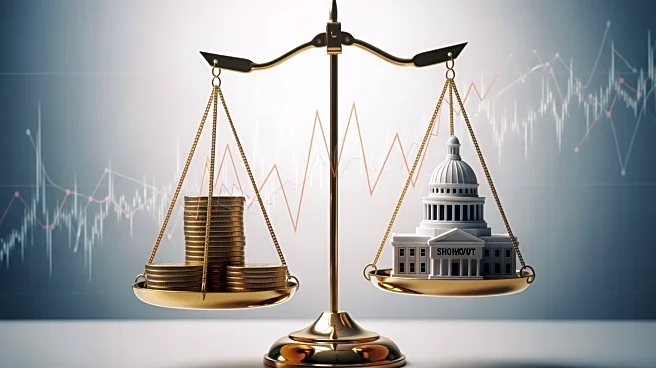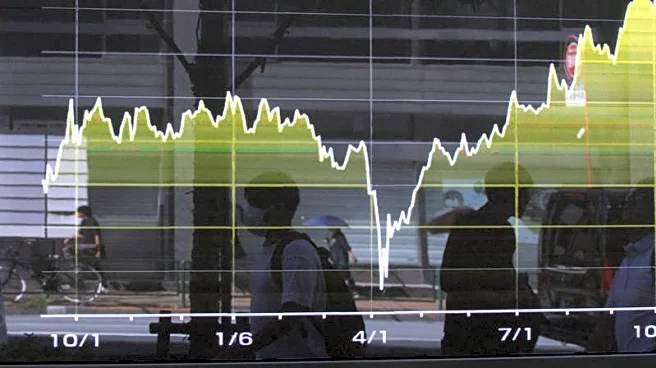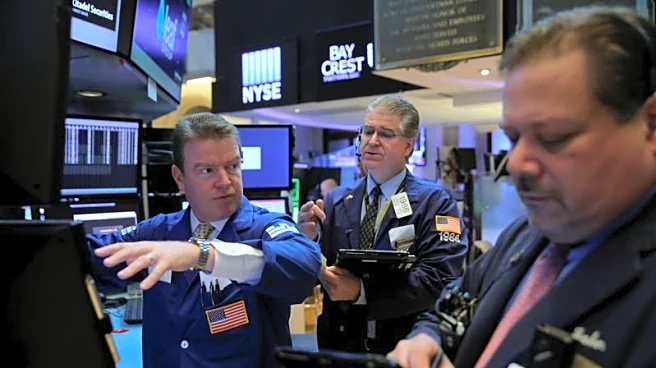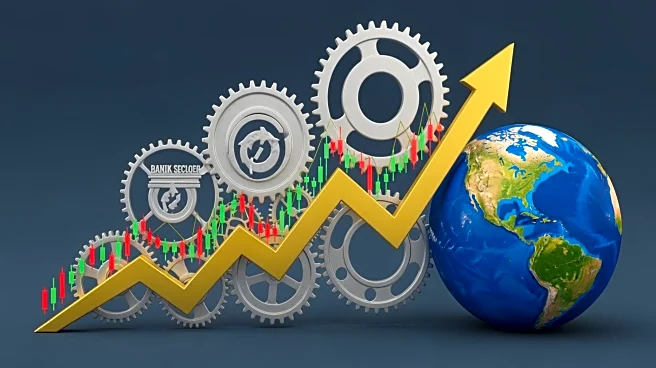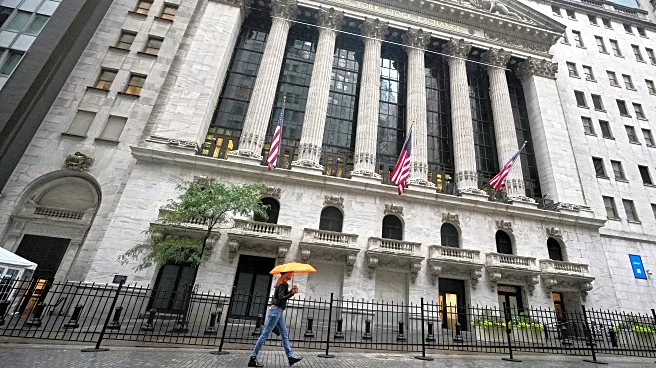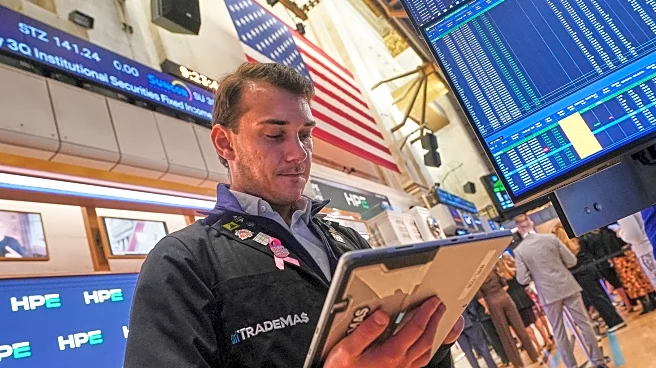What's Happening?
The U.S. stock market experienced fluctuations as traders navigated trade tensions and a prolonged government shutdown. The S&P 500 and Nasdaq Composite saw declines, while the Dow Jones Industrial Average fell by 172 points. The market's volatility was
exacerbated by a spike in the Cboe Volatility Index and movements in bond yields and the U.S. dollar. AI stocks initially led gains but later retreated, with major companies like Meta Platforms and Microsoft seeing declines. Regional banks also faced challenges, with Zions and Western Alliance experiencing significant drops due to bad loans and alleged fraud.
Why It's Important?
The ongoing trade tensions between the U.S. and China, coupled with the government shutdown, are contributing to market instability. President Trump's threats of additional tariffs on Chinese goods and a potential cooking oil trade ban have heightened investor concerns. The banking sector's struggles, particularly with loose lending practices, raise questions about financial stability and credit market transparency. These factors are influencing investor sentiment and could impact economic growth, consumer spending, and corporate earnings.
What's Next?
Investors are closely monitoring developments in trade negotiations and the resolution of the government shutdown. The lack of economic data releases due to the shutdown is creating uncertainty, making it challenging for traders to assess market conditions. As earnings season progresses, companies' financial results will be scrutinized for insights into economic health and potential impacts of trade policies. Stakeholders, including policymakers and business leaders, may need to address these issues to restore market confidence and stability.
Beyond the Headlines
The current market dynamics highlight the interconnectedness of global trade policies and domestic economic conditions. The Trump administration's approach to trade and regulatory measures may lead to long-term shifts in international relations and economic strategies. Additionally, the banking sector's challenges underscore the need for transparency and risk management in credit markets, which could prompt regulatory reviews and reforms.
